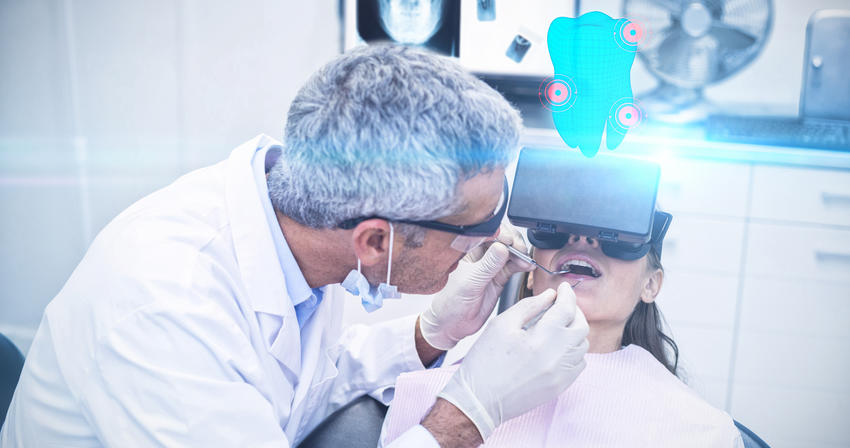Digital Grand Rounds ponders if dentistry is "there yet" with virtual reality

“Are we there yet?”
It’s a question every parent has heard on a car ride. And now, it’s a question dental experts are asking when it comes to the inclusion of various forms of technology in dental education and practice. It’s also the question Cortino Sukotjo, DDS, PhD, MMSc, FACP, director of the predoctoral implant program at the University of Illinois-Chicago sought to answer in regards to virtual and augmented reality. He explored the question at a Digital Grand Rounds presentation on Wednesday, March 16th.
Now in its fifth year, Digital Grand Rounds is hosted by the school’s Continuing Dental Education and brings professionals together virtually to discuss temporary topics as a community of experts. The series makes up one component of the School of Dentistry’s commitment to continuing education for alumni and the greater community. This year, the series focuses on the role of augmented and virtual reality in the future of oral health.
Rather than provide a definitive answer to the question of whether we are “there” when it comes to AR and VR in dentistry, Sukotjo demonstrated a variety of examples–some his own, some from colleagues and fellow researchers–of how this emergent technology can transform the way we provide care and education.
“It’s a good question, for all of us,” he reflected. “Where are we in regards to technology? This is the future.”
He explained that learning with gadgets is not only the future, but is what learners have come to expect. “This is the way they communicate,” he said, sharing a story of his daughter texting him from another room. “They’re different than we were at their age.”
Though the concept of incorporating augmented and virtual reality might seem like a big lift, Sukotjo reminded viewers that inviting new technology into dentistry is nothing new: techniques like digital dentures and software for more effective implants are already part of curricula and treatment plans. Virtual reality and augmented reality, while different in practice, are merely part of the same expansion of technology and innovation.
After discussing the benefits of virtual and augmented reality–including the ability to practice new skills in a safe setting and the ability to work in a way that is less time and location dependent–Sukotjo demonstrated a new single-user dental implant simulation project he and colleagues have developed. “The user can have an immersive experience, similar to working in a real dental cubicle,” he explained.
Sukotjo and his collaborators performed studies to explore faculty and student attitudes toward this new setup, finding that faculty and students are satisfied and comfortable with the instrument, though they also still feel the need for additional in-person practice and typodonts.
He then explored other examples of single- and multi-user virtual and augmented reality in dental care and education, including an eTypodont for showing patients what will occur in a procedure, a virtual standardized dental patient to train students to be better communicators and an augmented reality that increases engagement for young patients.
The projects involving augmented and virtual reality in dentistry are many. While we still have a ways to go before classrooms and dental offices are able to universally implement these devices, Sukotjo explained that these new methods of working with technology are inevitable. “I don’t know how many places are already using this technology,” he said, “but they are the future. Virtual and augmented reality increase retention, interactivity and information available to students, patients and practitioners.”